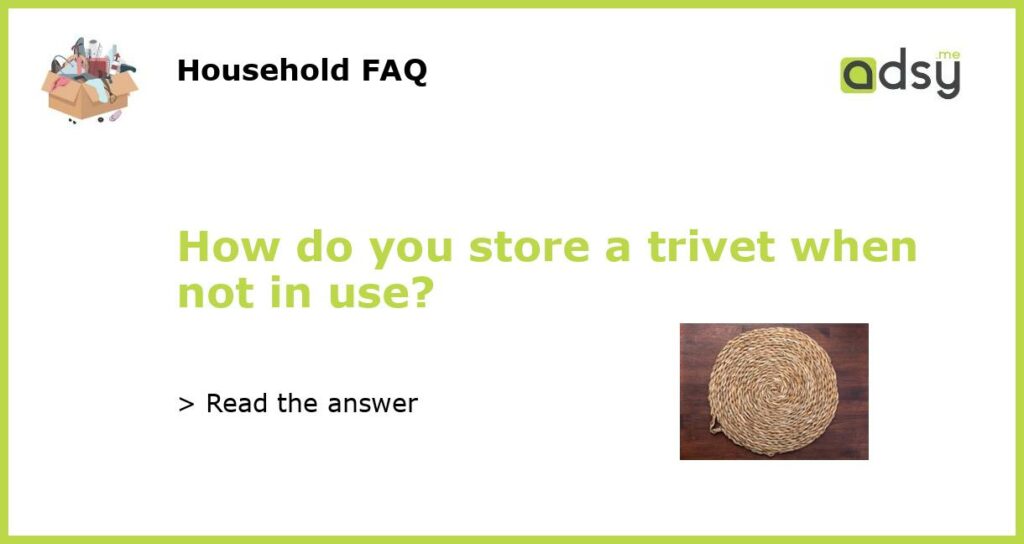What is a trivet?
A trivet is a small, flat, and usually decorative object that is used to hold hot serving dishes or pots to protect the table or countertop from heat damage. Trivets are commonly made of materials such as cast iron, stainless steel, wood, and silicone, and they come in various sizes and designs.
Why is proper trivet storage important?
Properly storing your trivet when not in use is essential to ensure its durability and functionality. By storing it correctly, you can prevent damage, keep it easily accessible, and maintain an organized kitchen or dining area.
Methods of storing trivets
There are several ways to store a trivet when not in use. Here are some popular methods:
3.1 Hanging storage
Hanging your trivet is a great way to keep it easily accessible while also adding a decorative touch to your kitchen. You can hang it on a hook or a wall-mounted trivet rack. This method works well for trivets made of cast iron or stainless steel.
3.2 Drawer or cabinet storage
If you prefer a more compact storage solution, keeping your trivet in a drawer or a cabinet is a good option. Make sure to place it in a dedicated space or container to prevent scratches or damage from other kitchen utensils.
3.3 Bookshelf or display storage
If you have a decorative trivet that you’d like to showcase, consider using a bookshelf or display area in your kitchen or dining room. This method works well for trivets made of wood or other visually appealing materials. Ensure that the trivet is kept away from direct sunlight to prevent fading or discoloration.
Tips for trivet storage
Here are some additional tips to keep in mind for proper trivet storage:
4.1 Clean and dry
Before storing your trivet, make sure it is clean and completely dry. If it’s made of cast iron, be sure to properly season and oil it to prevent rust. Moisture can cause damage to trivets made of wood or silicone, so ensure they are dry before storing.
4.2 Avoid stacking
Avoid stacking trivets on top of each other, especially if they are made of different materials. This can cause scratches or damage. If you need to stack them due to limited space, place a soft cloth or liner between each trivet to provide a buffer.
4.3 Consider temperature and location
Keep in mind the temperature and location where you store your trivet. Extreme heat or cold can affect certain materials, so choose a storage space that is relatively stable and away from direct sources of heat or cold, such as a stove or refrigerator.
In conclusion
Storing your trivet properly when not in use is important to protect it from damage and maintain its functionality. Whether you choose to hang it, store it in a drawer or cabinet, or display it on a bookshelf, make sure to keep it clean, dry, and away from extreme temperatures. By following these tips, you can ensure that your trivet will remain in good condition for years to come.






